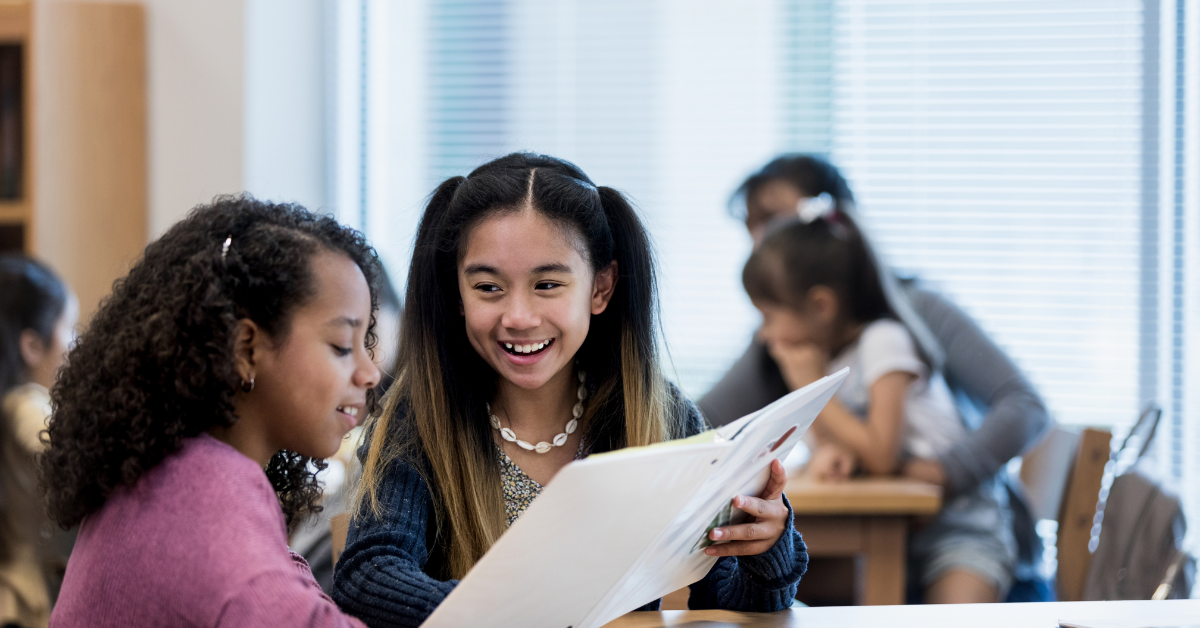
Joel Bevans, the Elementary Curriculum Coordinator for the International School of Panama explains that “you create future change makers by empowering them through Choice, Voice, and Action.” Here, we’ll explore ways we can support youth with Choice, Voice and Action.
1. Bolster Student Voice
Student voice captures various elements of youth input relative to circumstances that govern their lives. Youth voice can be developed at school; and it’s a skill that is readily needed for life beyond school. For one, voice empowers students to speak up and to bring these concerns to the attention of others.
SPEAK, a free curriculum that builds voice among girls and young women, provides tools for getting to know one’s own voice and using it for self and civic advocacy. The SPEAK curriculum employs a series of vocal exercises, group activities, collaborative skit building and deep reflection to grow and celebrate youth voice. We can implement similar strategies (or utilize SPEAK’s curriculum directly) in the classroom. From blogs to videos to storyboards to murals to songs, we can invite students to discover their own best fit for a particular idea or message.
You can engage in your own vocal exercising through SPEAK’s ExPLoration - a brief, online Professional Learning experience to help you learn about the mechanics of your own voice, how to take care of your voice, and how to support vocal empowerment for both yourself and your students.
2. Make Room for Choice
“[Student choice] redefines the position of teacher from knowledge authority to learning guide,” explains Author Wolpert-Gowron. It prompts a shift from teacher-as-director to teacher-as-collaborator. “Letting students take the lead when it comes to planning their ideas fosters creativity and creates a sense of ownership among students,” says Lee Watanabe-Crockett of Global Citizen. “If they believe in it, they will own it, making the idea, or even project, more meaningful to them.”
Choice strengthens voice. It adds meaning, depth, experience, and will. The element of choosing- whether it be the message, the goal, the platform, or the strategy- brings students’ voices to life.
In the classroom setting, this may be fostered through Guided Choice (say, selecting a spot for flexible seating or choosing the order in which to complete three separate assignments). Project-Based learning and other forms of student-led discovery benefit choice and voice significantly.
3. Take Action
It’s important to connect learning to real-life events, experiences, and role models.
“Classes should not be taught in a bubble. Bring in real world events to demonstrate connections between what is going on in students’ lives to the learning material,” suggests Watanabe-Crockett.
Steve Mesler, an Olympic bobsledder and founder of Classroom Champions, reminds us that relationships are another important part of this equation. “Desire is not enough. Students need a plan,” he says. “Students need practical guidance on goal setting, persistence, and action to make dreams happen.”
Mesler recommends connecting students to real-life game changers. Classroom Champions links learners to Olympic and Paralympic athletes. Other thoughts: Connect kids to local representatives, business leaders, community organizations, or professional mentors. Students can also grow from connecting with people from dissimilar backgrounds, cultures, or regions. This type of guided exposure can shed light on important social issues that may spark interest or action in their communities.
And, if outside-of-school links are highlighted in our instruction, they should also be reflected in our assessment. Becs Boyd, for Getting Smart, suggests this shift: Try “assessing school work not just on its competence, but also on its wider contribution to students’ growth, to the community, and to sustainability.”
By enacting voice, choice, and action, we give youth powerful tools for changemaking. And through exposure, connection, and guidance, we can support kids as active agents of change in their local communities and beyond.

